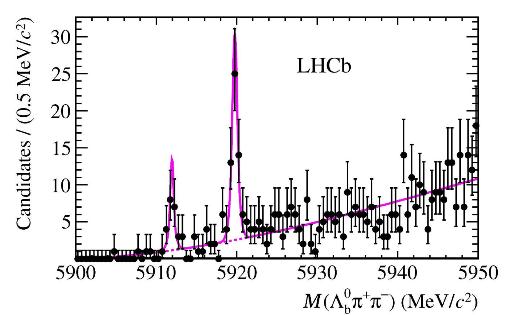The quark model, independently proposed by physicists Murray Gell-Mann and George Zweig in 1964 to classify the strongly interacting particles called hadrons, is very successful. In this model baryons are composed of three quarks and mesons are composed of quark-antiquark pairs. The simplest baryon, the proton, which is the nucleus of the hydrogen atom, is composed of three light quarks uud while its neutral partner the neutron is composes of udd quarks. By replacing one of the d quarks by a heavier strange quark s we obtain a Λ particle composed of uds quarks. Furthermore by replacing in the Λ the s quark by a charm quark c or a beauty quark b we obtain a Λc or a Λb particle.
The three quarks forming the Λ, Λc and Λb are in their lowest quantum mechanical state. Like electrons in atoms quarks can form excited states with different values of angular momentum and quark spin orientation. These excited states were previously observed for the Λ and Λc particles. They were, however, never observed for the Λb particle.
The LHCb collaboration has made first observations of two excited states of Λb.
click the image for higher resolution
The Λb excited states have been reconstructed in three steps. In the first step the Λc+ particles were reconstructed through their decay into a proton p, a negative K– meson and a positive π+ meson. In the second step the Λc particles were combined with negative π– mesons in order to form the Λb particles. The Λb signal is clearly seen as the enhancement in the left image above showing the Λc+π– invariant mass spectrum. Finally the Λb particles have been combined with a pair of opposite sign pions π+π–. In the right image above two enhancements are clearly seen corresponding to the two Λb excited states with masses of 5912 and 5920 MeV, about 6 times the proton mass.
LHCb physicists have observed about 16 Λb(5912)→Λbπ+π– decays (5.2σ significance) and about 50 Λb(5920)→Λbπ+π– decays (10.2σ) among about 60 million million (6*1013) pp collisions seen by the LHCb detector at LHC during the 2011 data taking period.
Read more in CERN Bulletin article in English and French, in the CERN Courier article and LHCb publication.


